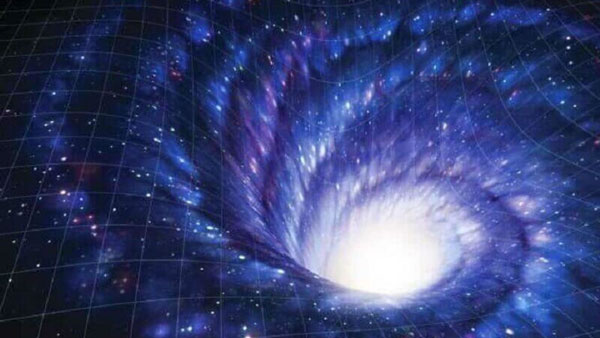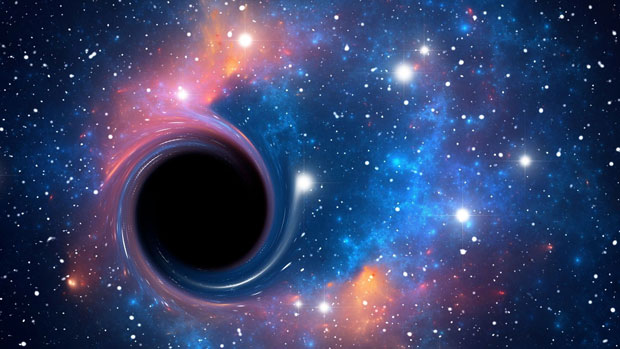New breakthrough in black hole research helps find 'missing link' in the universe's 10 billion year history
Recently, experts have discovered what is known as the 'missing link' in the process of understanding the universe.

A breakthrough in the study of black holes has been made (Image: GETTY)
The discovery was made inside a star cluster in the Andromeda galaxy, known as AKA M31. Experts studied the changes in light to identify a giant region of spacetime with a mass nearly 100,000 times the mass of the Sun. This variation is similar to the "average mass" of black holes - both of which are elusive and highly sought after by astronomers to answer the universe's biggest questions.
The team of astronomers, led by Renuka Pechetti of Liverpool John Moores University, wrote: "In this paper, we use kinetic and high-resolution mass models to represent a an average mass black hole equivalent to about 100,000 suns (IMBH) with a magnitude greater than 3-sigma".
Their work is posted to arXiv and approved by the American Astronomical Society (AAS).

The majority of black holes can be classified under two mass ranges. (Image: GETTY)
Black holes are formed when massive stars collapse at the end of their lives and can continue to grow by absorbing and merging with other stars. This interaction has been observed for decades, and scientists use it to determine the presence of a black hole, since the radiation is emitted as visible light in space.
Most black holes can be classified under two mass ranges. There are black holes with stellar masses, about 100 times the mass of the Sun; there are also supermassive black holes with a mass one million times the mass of the Sun.
In between is a range of intermediate classifications, discovering them could help provide the "missing link" in understanding the secrets of the universe, however rare it is. To date, the number of IMBHs detected remains extremely low. Without finding more intermediate-mass black holes, scientists will struggle to solve the question of how two extremely different mass regimes can coexist. A solid population of black holes in the mid-mass range could help us understand how black holes evolve.
This is why a cluster of stars in the Andromeda galaxy, called B023-G078, is of such interest to scientists. B023-G078 is the largest star cluster in the galaxy, a gravitationally bound globular cluster, 6.2 million times the mass of the Sun.
According to the models, the cluster forms when one galaxy displaces another. Astronomers have studied the cluster's metal content, based on signatures in the light it emits, and determined that it is about 10.5 billion years old. They then studied how the stars move around the center of the cluster, thereby calculating the mass of the black hole inside.
The result is about 91,000 Sun masses, which is about 1.5% of the cluster's mass. The experts added: "We believe in the presence of a single IMBH because of other indications that B023-G78 is a detached nucleus, as well as the apparent density of the dark component. Having higher spatial resolution will help improve current limitations and will be a priority in the coming era of astronomy."
- Find the missing link on the black hole
- Stunned 'cosmic monster' by 50,000 times the Sun
- 740 million light years away is a completely different universe of black holes
- The supermassive black hole was discovered 34 billion times larger than the Sun.
- The black hole can only expand to 50 billion times the mass of the Sun, it is impossible to 'eat to grow'
- Video: Compare the size of black holes in the universe
- Star 'starving' black hole is a billion light years from Earth
- Black holes can be 50 billion times more massive than the Sun.
- Spending $ 19 million to get the first picture of black hole history
- Discover the mystery of the most exotic black holes in the universe
- Stephen Hawking revealed a new path to other universes
- This 29-year-old girl is the one who helps find the world's shaken black hole
 Van Allen's belt and evidence that the Apollo 11 mission to the Moon was myth
Van Allen's belt and evidence that the Apollo 11 mission to the Moon was myth The levels of civilization in the universe (Kardashev scale)
The levels of civilization in the universe (Kardashev scale) Today Mars, the sun and the Earth are aligned
Today Mars, the sun and the Earth are aligned The Amazon owner announced a secret plan to build a space base for thousands of people
The Amazon owner announced a secret plan to build a space base for thousands of people